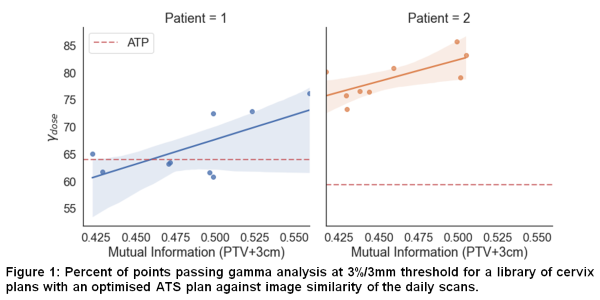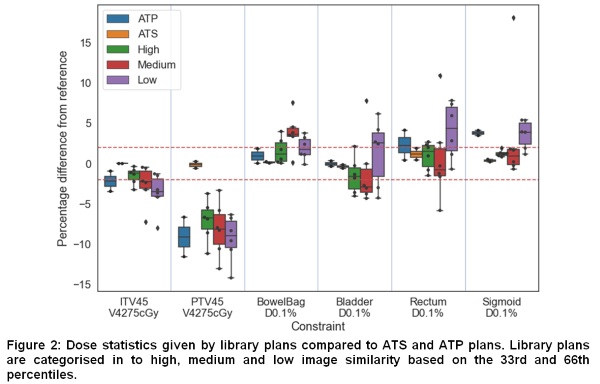Evaluating a method of treatment plan selection from daily plans on the MR-Linac
PD-0895
Abstract
Evaluating a method of treatment plan selection from daily plans on the MR-Linac
Authors: Joe Stickley1,2, Robert Chuter1,3
1The Christie NHS Foundation Trust, Christie Medical Physics and Engineering, Manchester, United Kingdom; 2Nottingham University Hospitals Trust, Radiotherapy Physics, Nottingham, United Kingdom; 3University of Manchester, Division of Cancer Sciences, Manchester, United Kingdom
Show Affiliations
Hide Affiliations
Purpose or Objective
Adaptive radiotherapy using the MR-Linac has the
potential to greatly improve the quality of patient treatments. Plans can be
adapted based on a daily scan that account for changes in position using an
adapt-to-position (ATP) workflow, or adapted to both anatomy and positioning
using an adapt-to-shape (ATS) workflow. A full optimisation is currently used
to give the best plan for the anatomy that day. However, the mean time taken
for optimisation alone has been approximately 14 minutes. As a library of
adapted plans is built up for each day that a patient is treated, it is
possible that on a given day a suitable plan already exists. This work
investigates a method for automatically selecting a plan from this dynamic
library to improve the workflow efficiency. This could improve the patient
experience, and reduce uncertainties due to anatomical change between scanning
and delivering treatment.
Material and Methods
Evaluation of using library plans based on image
similarity has been carried out for 4 prostate and 2 cervix patients at the 10th
fraction.
Image similarity of daily scans with the previous 9
treatment images was assessed using ADMIRE (Elekta). This performed a rigid
registration and extracted similarity measures in a region of interest
including the planning target volume (PTV) with an additional 3 cm margin. ATS
plans from previous fractions (library plans) were copied on to the 10th
fraction using an adapt segments method which shifts segments based on rigid
registration between the two scans.
An ATS plan optimised from fluence was used as a
gold standard against which library plans were compared. Gamma analysis (γdose
, 3%/3mm) of library plans against the gold standard was performed. This
measure was used to test for correlation with similarity to determine whether a
given metric may be suitable. Finally, dose statistics were compared for the
resulting library plans.
Results
For the two available cervix patients, a
positive correlation was found between gamma pass rates and image similarity
using mutual information in the PTV and surrounding 3cm where r=0.68 and r=0.71 respectively (see
Figure 1). Across all 6 patients, 69% of library plans gave a closer agreement
than an ATP plan (72% for cervix). In prostate patients correlation with image similarity
was not seen. This is thought to be due to lower inter-fraction anatomy change
in these patients. Higher similarity library plans used for the cervix patients
often gave dose statistics in closer agreement with the reference plan.
However, there was variation within this as shown in Figure 2.


Conclusion
For
patients with cervix cancer image similarity could provide a method for
automatic selection from library plans accumulated on the MR-Linac. This saves
a significant amount of time between scanning and delivering treatment.
However, correlation of plan quality with similarity may be improved by
refinement of methods. This work will be validated on a
larger cohort as part of ongoing work.